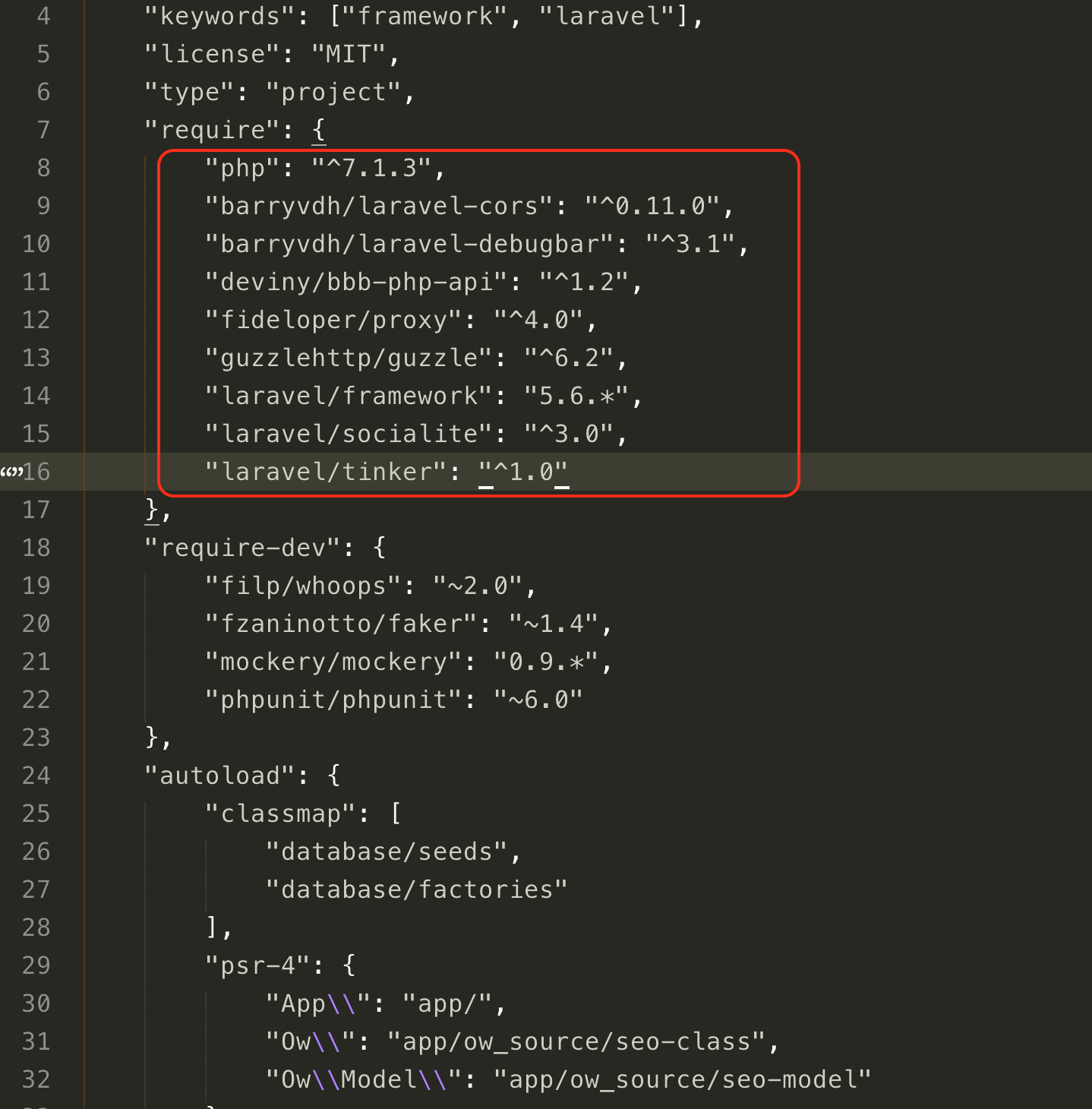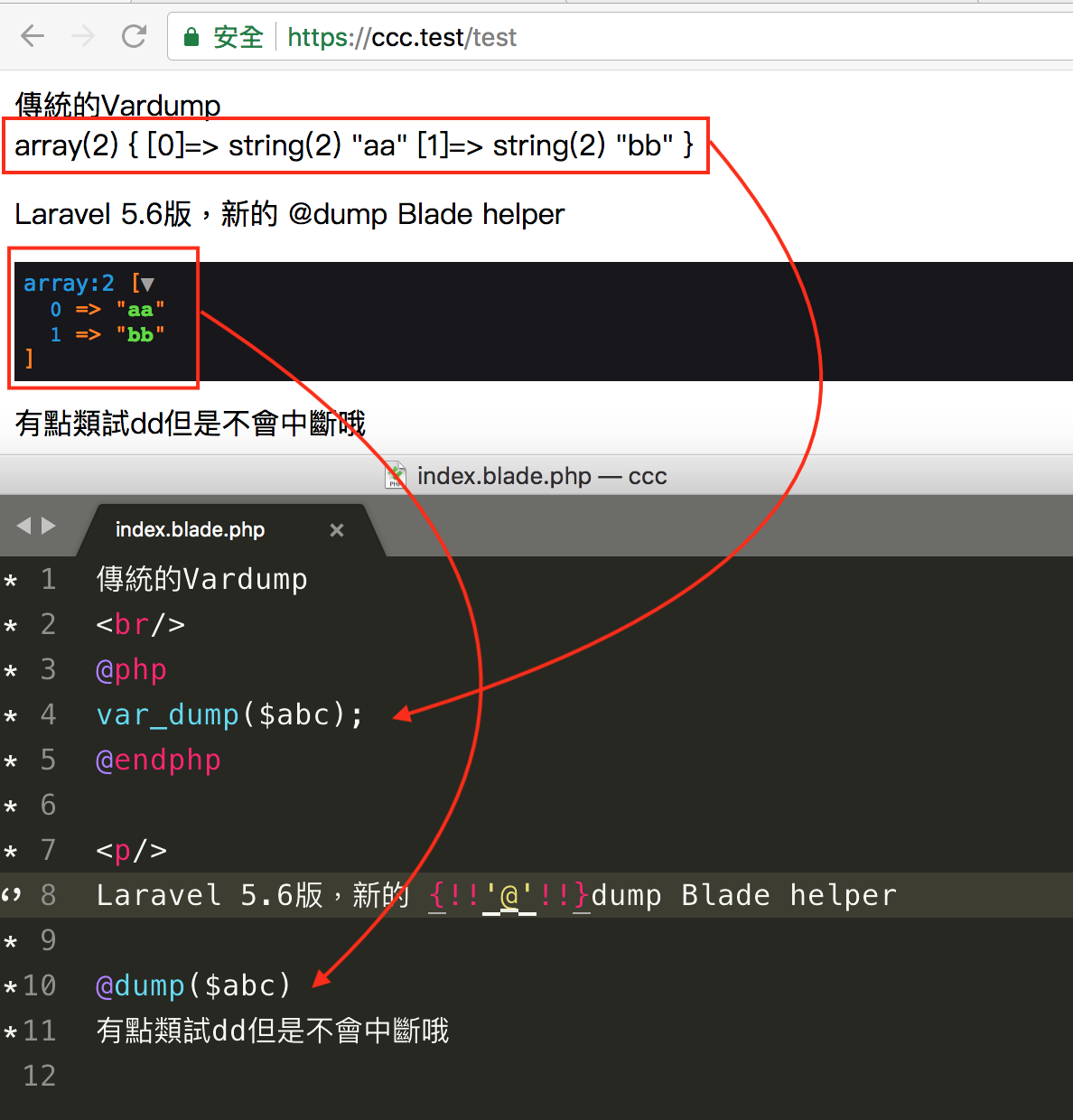Foreword:
In the directive of Laravel 5.6.8, there is a new function called @dumpLet's see how cool he is.
Regarding the update:
Before starting, let me briefly describe my update experience this time. My last version was Laravel 5.5.33 (the version before the update).In this update, I directly modified my composer.json to use the new version of Laravel,
Then update him directly.

After adjusting require, execute it directly for him
composer update
After updating, execute php artisan (alias) to view the version. Update 5.5.33 to 5.6.11 ..:)
The update went smoothly and executed without issue, luckily .
The above is my update experience, if you want to update like this, please be sure to test whether it is feasible in the development environment first!!
Or suggest reading the upgrade manual.
https://laravel.com/docs/5.6/upgrade
topic
Closer to home, let's take a look at the new feature @dump of the blade on 5.6 that I updated.Here, I spit out an Array $abc from the Controller to the view for testing.
Display the results through var_dump and @dump respectively:

In the above picture, you can see that
@dump super easy to use, and it can also be collapsed : (as shown below)
Cool..I like it.





No Comment
Post your comment